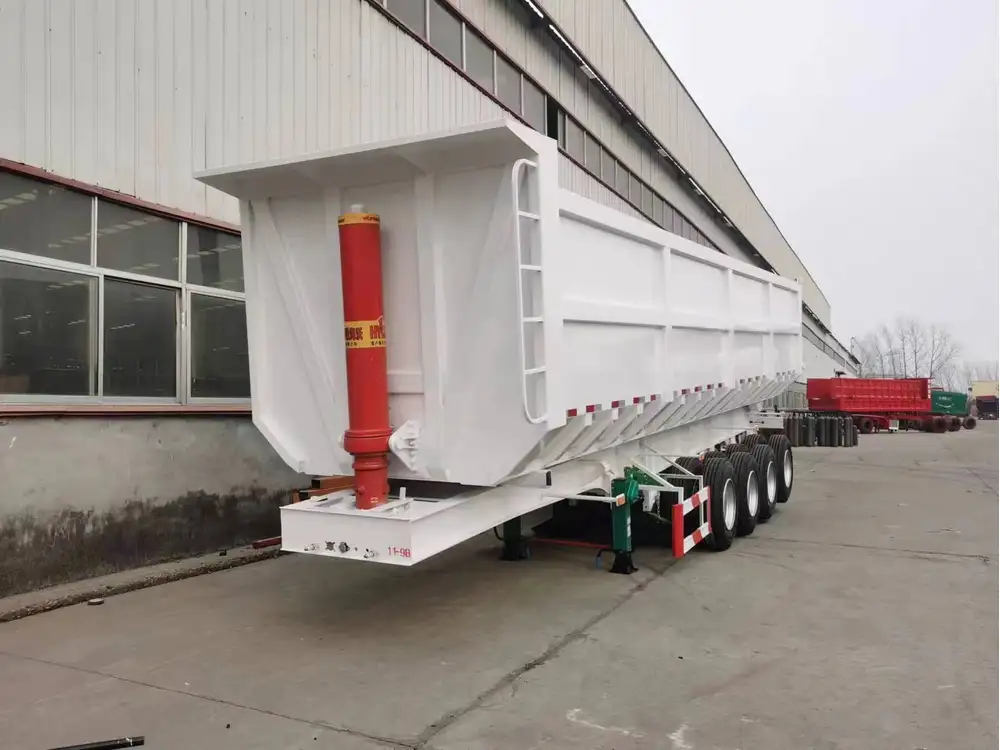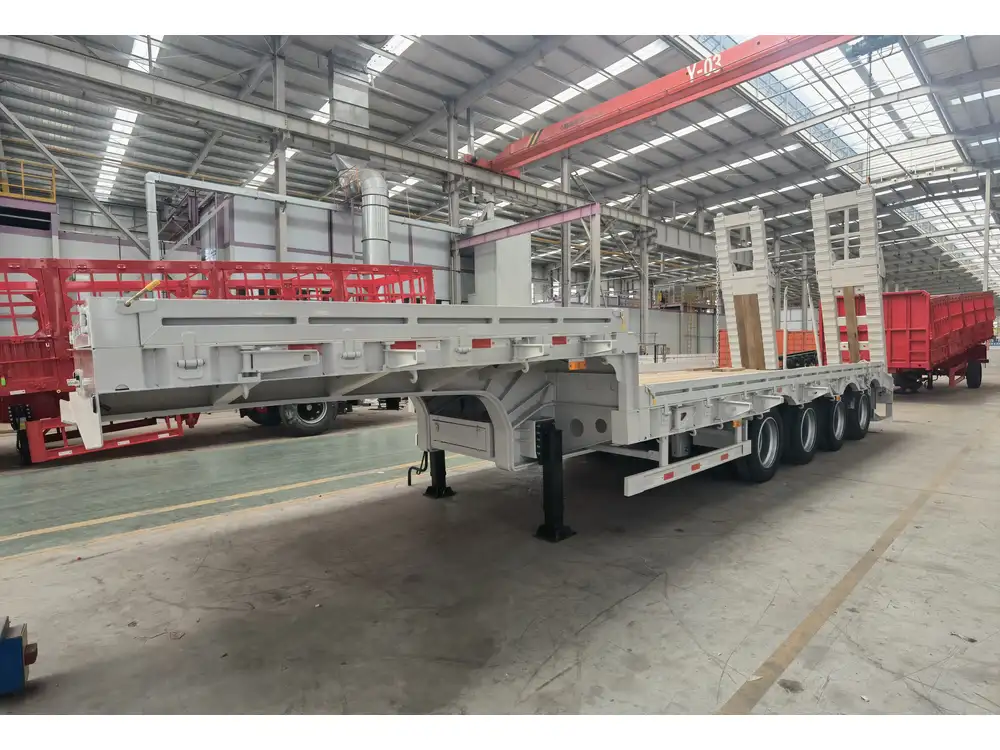Understanding the intricacies of purchasing a semi-trailer requires examining multiple factors that contribute to the overall cost. With growing demand in logistics, freight, and transport, acquiring a semi-trailer can be a formidable investment. This guide will navigate through the assorted elements influencing expenses, empowering potential buyers to make informed decisions.
Factors Influencing Semi-Trailer Costs
Investing in a semi-trailer isn’t merely about the sticker price; various elements shape the total expenditure. Below, we dissect these components meticulously.
1. Type of Semi-Trailer
The type of semi-trailer significantly dictates its cost. Different trailers serve various purposes in cargo transportation, encompassing:
- Flatbed Trailers: Ideal for transporting heavy machinery and building materials, flatbed trailers generally range from $15,000 to $30,000.
- Reefer Trailers: Perfect for refrigerated goods, these often have a higher price tag, sometimes hitting $30,000 to $70,000.
- Tanker Trailers: Used for transporting liquids, prices can vary dramatically based on capacity and complexity, ranging from $25,000 to over $100,000.
- Dry Van Trailers: Commonly used for general freight, they typically cost between $20,000 and $50,000.
The model and configuration of the semi-trailer directly affect its pricing structure.

2. Size and Capacity
Semi-trailers come in different sizes and capacities. Notably, standard lengths are 48 or 53 feet. Larger trailers often have higher costs due to their ability to carry more cargo, appealing to fleet operators aiming to maximize efficiency.
Price Comparison Table
| Trailer Type | Price Range | Capacity (ft) | Ideal Cargo Type |
|---|---|---|---|
| Flatbed | $15,000 – $30,000 | 48-53 | Machinery, Construction |
| Reefer | $30,000 – $70,000 | 48-53 | Food, Pharmaceuticals |
| Tanker | $25,000 – $100,000 | 48-53 | Liquids |
| Dry Van | $20,000 – $50,000 | 48-53 | General Freight |
3. Brand and Manufacturer Reputation
The reputation of the manufacturer can also play a crucial role in determining the cost of a semi-trailer. Established brands often command higher prices due to perceived reliability, durability, and quality. Newer manufacturers might offer competitive pricing to penetrate the market but could lack established service support.

4. Additional Features and Customization
Customization options can lead to a vast disparity in pricing. Features such as:
- Lift Gates
- Custom Paint Jobs
- Specialized Ramps
- Enhanced Insulation for Refrigeration
Each added feature contributes to increases in base price, often warranting an additional $2,000 to $10,000, depending on complexity.
5. New vs. Used Semi-Trailer
The decision to purchase new or used semi-trailers will have a significant impact on cost.
- New Trailers: With warranty and modern features, they usually cost 20%-30% more than their used counterparts.
- Used Trailers: While these can be affordable options, typically ranging from $10,000 to $40,000, they come with potential maintenance needs and shorter lifespan considerations.
6. Financing and Warranty Costs
Beyond the price tag of the trailer itself, financing becomes pivotal. Interest rates for financing can range from 4% to 10%, translating into significant extra costs over time.

Warranty Options
Warranties – usually ranging from 1 to 5 years – can add substantial value but also increase initial costs. Weighing the risks of warranty versus potential repairs can guide your financial strategy.
7. Geographic Location
Geographic location can also affect costs. Regions with higher operational expenses will likely reflect in broker and dealer prices. Additionally, transportation costs to deliver the trailer to your location must be factored in, which can vary widely.
8. Regulatory Compliance and Specifications
Different states and countries impose unique requirements for semi-trailers, which can impact legal compliance costs. Upgrades to meet these specifications may add anywhere from $500 to $5,000 to the cost, particularly for certain types of cargo or regions.

Semi-Trailer Cost Summary
Considering the multitude of factors involved, semi-trailer costs encompass a wide range. A reasonable summarized cost breakdown includes:
| Trailer Condition | Estimated Cost |
|---|---|
| New Flatbed | $15,000 – $30,000 |
| Used Flatbed | $10,000 – $20,000 |
| New Reefer | $30,000 – $70,000 |
| Used Reefer | $25,000 – $50,000 |
| New Tanker | $25,000 – $100,000 |
| Used Tanker | $15,000 – $60,000 |
| New Dry Van | $20,000 – $50,000 |
| Used Dry Van | $15,000 – $30,000 |
Additional Considerations for Buyers
When determining the total cost, it’s imperative to consider ongoing expenses that accompany trailer ownership. These can include:
- Maintenance Costs: Generally healthy budgeting suggests allocating about 10% of the purchase price annually for maintenance.
- Insurance Premiums: Costs for insuring semi-trailers can vary but typically range from $1,200 to $3,000 per year based on type, brand, and cargo sensitivity.
- Fuel Consumption: Fleet efficiency isn’t solely affected by vehicle choice; the weight and type of trailer impact overall fuel efficiency, influencing operational costs directly.
Conclusion: Navigating Your Purchase Decision
Ultimately, answering “how much does a semi-trailer cost?” revolves around an amalgamation of factors, requiring diligent research and strategic planning. By evaluating the type, size, condition, brand, and additional features, prospective buyers can mitigate excessive costs while acquiring the right equipment for their needs.
Key Takeaways:
- Identify your specific needs: cargo type, weight, and frequency of transport.
- Consider both new and used options carefully in terms of total cost of ownership.
- Evaluate financing options based on interest rates, down payments, and payment terms.
- Analyze ongoing costs such as maintenance, insurance, and fuel consumption for insight into the total cost of ownership.
As you embark on your semi-trailer purchasing journey, leverage knowledge to illuminate your path, ensuring optimal investment through informed decision-making.



